Search Results
Fine Jewelry University Articles matching: “Art Deco diamond”
Showing only FJU Article results. Click here to show all results.
Fine Jewelry University (Show All FJU Articles)
-
Frequently Asked Question about Jewelry
… industry is staggering. What is Moissanite? Moissanite is lab-created silicon carbide. It has become an excellent diamond imitation since it gives a positive reading on a thermal inertia testers (diamond testers). Some people use this … diamond buyer out of their money. What is the difference between a Diamond Certificate and an Appraisal? A Diamond Certificate is a document issued by a Gemological Laboratory describing a Loose Diamond. The laboratory will not issue …
-
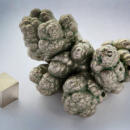
What to Do When Your Ring Irritates Your Skin
…try a new design. We do custom jewelry design , and one of our favorite projects is to take the raw materials (gold, diamonds, gemstones, etc.) from a client’s existing ring and use them to make a new and exciting creation. We can reuse the … the Platinum family. People are unlikely to be allergic to Rhodium, but as the plating wears off, irritation can start due to the fact that the skin is now in direct contact with the Nickel (or other metal) that they are allergic to. …
-
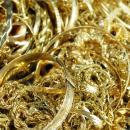
Gold Purity and The Differences Between White and Yellow Gold
…. White gold is available up to 21 karats. Most engagement rings are 14k or 18k. White gold is often used to enhance diamonds and other gemstones. White gold bridal jewelry is increasingly popular… alloy. Fine (pure) gold is 24 karat. The proportions in other karat grades are listed in the table below: Karat Parts Gold to Alloy Percentage Fineness 9K 9/24 37.5% 375 10K 10/24 41.67% 417 14K 14/24 58.33% 583 18K 18/24 75.00% 750 22K…
-
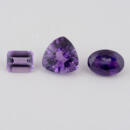
Gem in the Spotlight: Amethyst
…so keep that in mind when storing your amethyst jewelry. If you have an amethyst ring or other piece of jewelry with diamonds or other gemstones, you should be careful when cleaning it. You should use a soft brush to gently scrub the … in the creation of the gemstone known as amethyst. Amethyst has a long history of being used in jewelry and other decorative items. It was highly prized by ancient civilizations such as the Egyptians, who believed that amethyst had the …
-
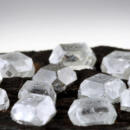
Is a Lab Grown Diamond Right for Me?
Picking a diamond for your engagement ring is a big decision. For most of us, buying a diamond is a significant financial undertaking… don’t have (anyone remember their refractive indexes from high school physics?). Even more unfortunately, the diamond industry suffers from a lot of misinformation and paranoia both from inside the trade and from outside observers. I have … conflict diamonds (both wild falsehoods). On the other hand, I have heard some in the industry refer to lab grown diamonds as fakes (also completely false). We’re here to help cut through some of the rhetoric, so you can make an informed …
-
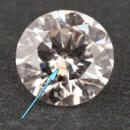
What Are Lab Grown Diamonds?
In the simplest terms, lab grown diamonds are diamonds that have been made by people instead of mined out of the earth. If it’s so simple, you might wonder …this sentence. The complexity arises from the fact that lots of different terms have been used to describe lab grown diamonds and their cousins, and not everyone uses these terms in the same way. So, let’s begin with some vocabulary. … mean man-made, copied, unreal, or even imitation. But, in this context, what do we mean when we say “synthetic diamond”? In the gemological world, synthetic is a highly technical term. When speaking technically, synthetic gems are man-made …
-

How Are Lab Grown Diamonds Made?
The dream of making a beautiful and valuable diamond from simple carbon has long captivated the imagination of scientists and visionaries alike. Just like the alchemists…, many have tried to achieve this impressive feat. We have only recently been able to produce gem quality, lab grown diamonds that are large enough to be used in jewelry. But, how is it done? Early Efforts Throughout history, many people …. Henri Moissan was one of the early pioneers in the field. In 1893, he claimed to have successfully made a diamond by heating charcoal to 3,500 degrees Celsius inside a carbon crucible. Many attempts were made to reproduce his techniques …
-
Caring for and Cleaning Your Jewelry
How to Clean Jewelry A diamond‘s spectacular beauty is due to its light show. Diamonds make light reflect, show its many colors, and dazzle. To … and lotions add a coating that stops the light show. Dust and dirt stick to the grease and oils creating a lifeless diamond. Cleaning your diamond jewelry at home is simple and rewarding. Use a soft toothbrush and mild soap then rinse … key to diamond cleaning is the underneath side or pavilion. The light needs a clean surface to bounce upward. The diamond may need to be scrubbed several times before all the build up is removed. Some don’ts of jewelry cleaning. Never use …
-
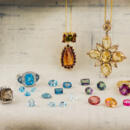
Gem in the Spotlight: Topaz
…ht. History and Lore Topaz in its pure form is naturally colorless, clear like a diamond. The famous “Braganza Diamond” was thought to be the largest diamond ever found (prior to the Cullinan Diamond) at 1,680 carats and was set in the Portu… to put coatings on lenses for glasses and cameras. It is also one of the processes that is used to create lab grown diamonds . A thin, multi-colored film is bonded on the surface of colorless topaz to create all the colors you see in Mystic…